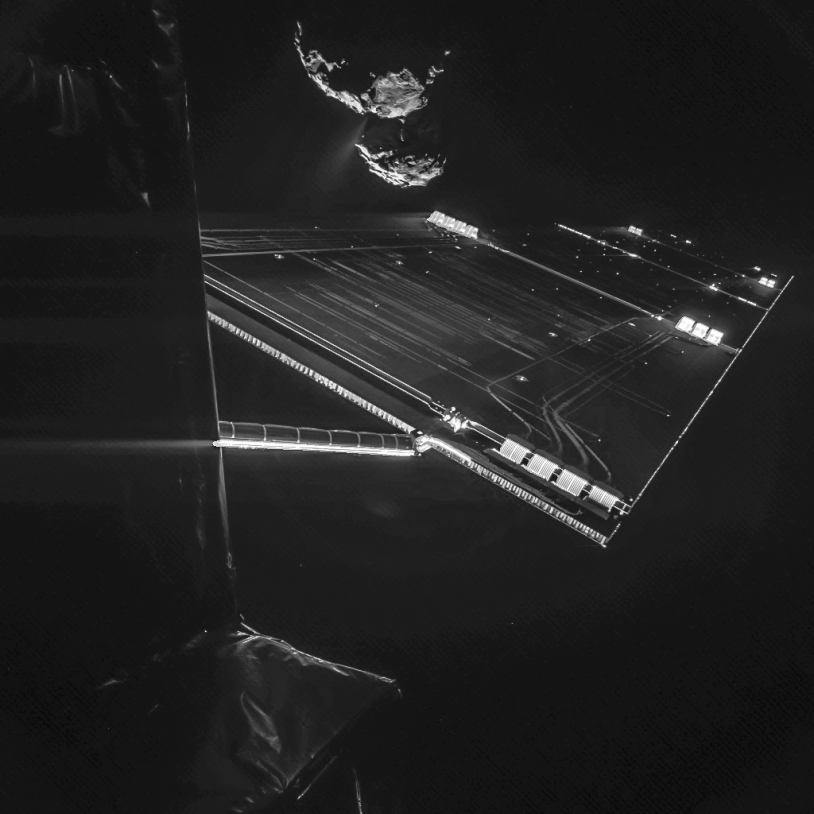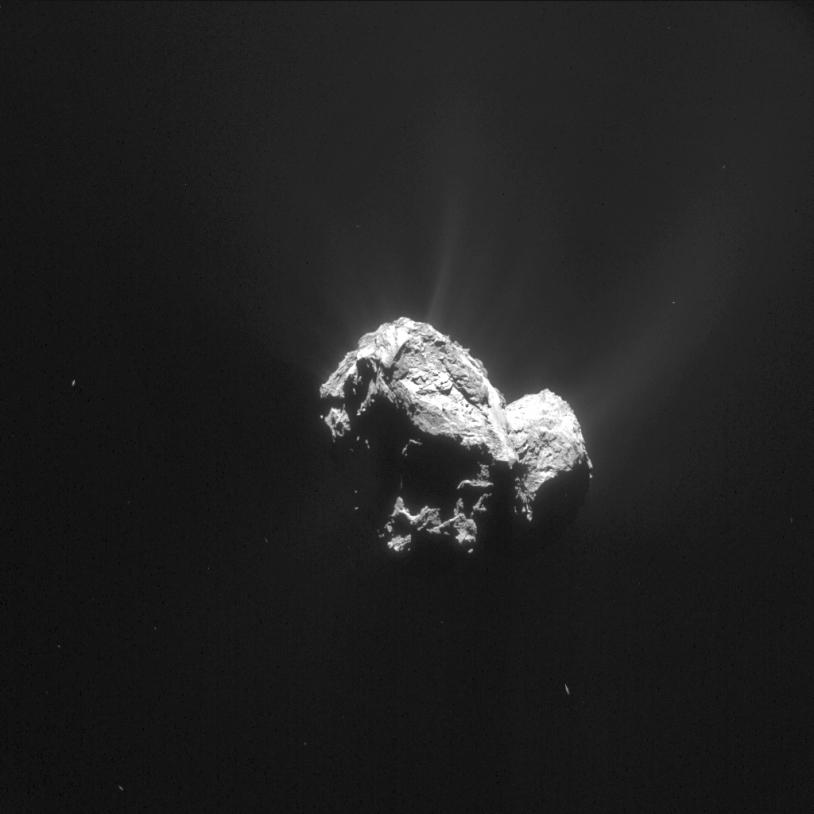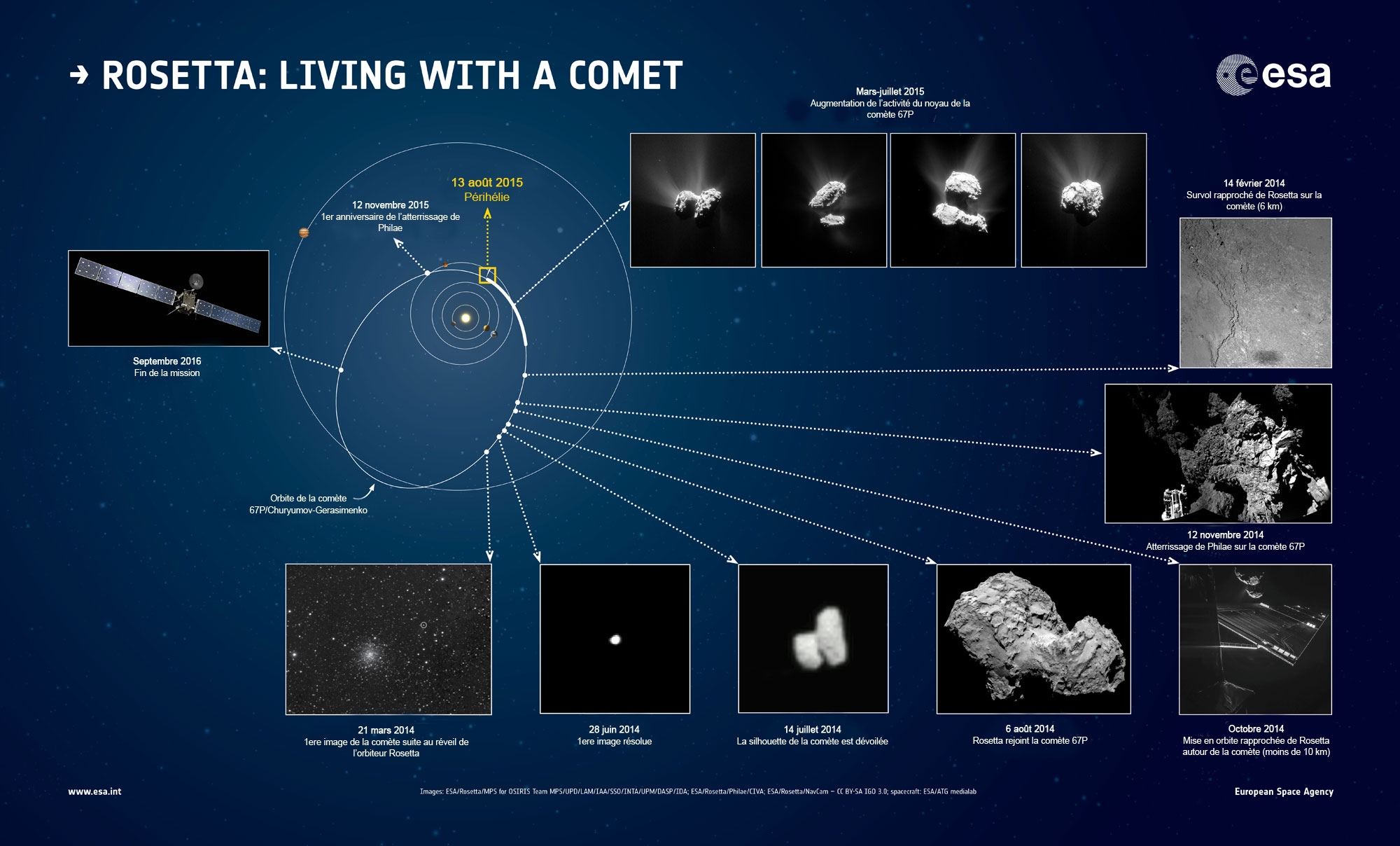The Rosetta spacecraft has been surveying comet 67P/Churyumov-Gerasimenko up close on its course around the Sun since 6 August 2014. The two celestial objects—one natural, one man-made—are hurtling through space at a speed of nearly 120,000 km/h and are about to pass perihelion, at a distance of just 186 million km from the Sun. At this point, the spacecraft and comet will be 265 million km from Earth, where signals will take 14 minutes and 44 seconds to reach us.
To mark perihelion, ESA has posted an infographic showing the key milestones of the Rosetta mission since the spring of 2014. A few weeks after waking from its deep-space slumber, Rosetta took a picture of comet 67P/Churyumov-Gerasimenko while it was still just a speck in the vast expanse of the cosmos. We had to wait until late June 2014 for the OSIRIS-NAC camera’s sensor to begin resolving the nucleus, and on 14 July 2014 the comet finally revealed its unique double-lobed shape. Less than one month later, on 6 August, Rosetta was placed onto an escort trajectory and the first high-resolution pictures of the nucleus’ chaotic surface burst onto screens the world over.

Comet in the frame
The picture of the comet’s nucleus obtained in October 2014 by one of the CIVA cameras on Philae while the lander was still hitched to the orbiter gave some idea of what to expect when the time came for it to make the ‘big leap’, and on 12 November Philae finally came to rest on the comet’s surface following several bounces on landing. After an initial phase lasting 60 hours, Philae’s science mission had to be halted as power ran out. Contact with the lander has been regained on several occasions since June this year, but it has so far proved impossible to resume science activities.
Credits: ESA/Rosetta/Philae/CIVA.
Meanwhile, the mission of the orbiter’s instruments has continued unchecked. Never has a comet’s nucleus been observed so close and for so long during the build-up of activity as it approaches the Sun.
Articles already published in science reviews almost all draw only on data gathered during the first months escorting the comet and on data from Philae. Plenty more are set to appear in the months and years ahead, such is the depth of data obtained, and the rich harvest is expected to continue for more than a year.
Comet 67P/Churyumov-Gerasimenko is currently between the orbits of Mars and Earth, a little less than 186 km from the Sun. Outgassing from the nucleus is near its peak, which generally occurs just after perihelion, and the orbiter has been moved to a safe distance of around 300 km where there is less chance of dust confusing the star trackers used to maintain its altitude.
Orbiter set to plunge to comet’s surface in 2016
In the coming months, the orbiter plans to get closer to the comet to attempt to regain contact with Philae before the lander is no longer able to generate enough power to function and communicate. Rosetta is also scheduled to make a ‘sortie’ to a distance of 1,000 km where it will analyse the composition of the comet’s tail while it is still dense and well-formed.
This November, one year after Philae’s landing, the comet will be passing beyond the orbit of Mars, and in September 2016 it will be close to the orbit of Jupiter. During the last three months of the mission, from July to September 2016, Rosetta will spiral gradually down toward the comet’s surface to give the instruments ideal conditions to glean more pictures and data before ending its extraordinary adventure by landing on the nucleus in the autumn.



Rosetta is an ESA mission with contributions from its member states and NASA. Rosetta's Philae lander is provided by a consortium led by DLR, the German Aerospace Centre, the Max Planck Institute for Solar System Research (MPS), CNES and ASI, the Italian space agency. Rosetta is the first mission in history to orbit a comet, escort it on its course around the Sun and deploy a lander on its surface.
